Today: Derivatives and dynamical models#
Tom Ranner
Recap#
Yesterday, we thought about the concept of rate of change
Speed is the rate of change of distance
Instantaneous speed is the limit of average speeds over shorter and shorter time periods
We also saw a geometric description:
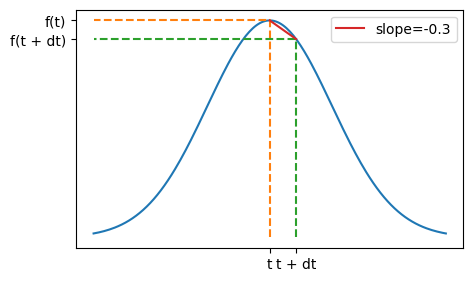
More on graphs and derivatives#
Example 1#
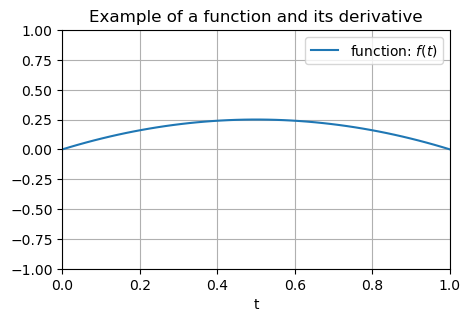
Example 1#
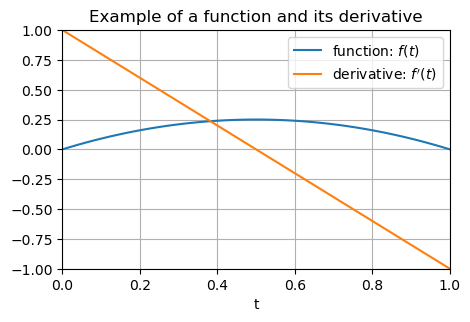
Example 2#
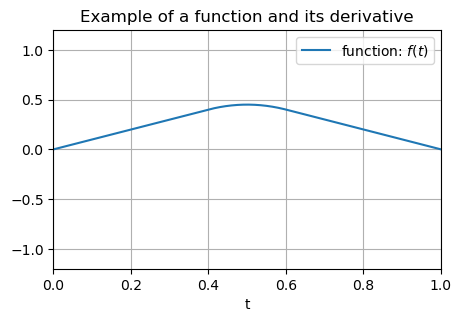
Example 2#
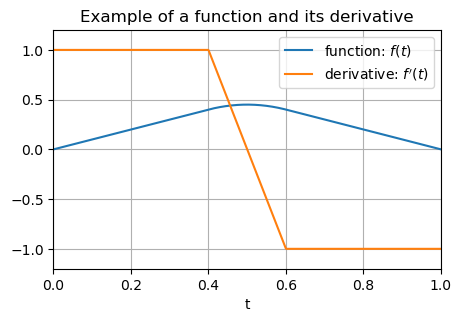
Example 3#
The population of Leeds over time (fitted):
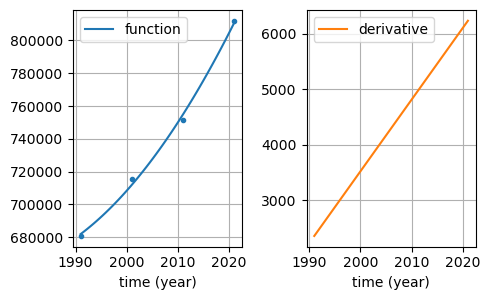
Example 4#
Climate data (fitted):
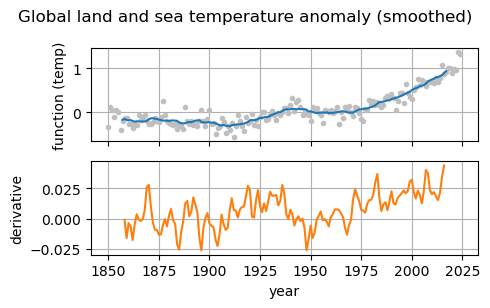
Data source: https://www.ncei.noaa.gov/access/monitoring/climate-at-a-glance/global/time-series
Differential equations#
We have already seen \(S(t) = D'(t)\).
This is an example of a differential equation - an equation which involves one or more derivatives.
We have seen (and computationally solved!) one example:
An object in free fall#
Consider a simple model for an object falling from a large height, based on two assumptions:
all objects are attracted downward with an acceleration due to gravity of \(9.81\, \mathrm{m} / \mathrm{s}^2\)
air resistance causes an object to decelerate in proportion to its spead
What is the net acceleration on the object#
Acceleration is the rate of change of speed! \(a(t) = S'(t)\)
A positive value for \(a(t)\) means that the speed is increasing whilst a negative value means that speed is decreasing.
We can write the downwards acceleration as
(here \(S(t)\) is the downwards speed)
So we have the differential equation:
How can we solve this equation#
Try to do the same as last lecture, split the time interval into small time interval and assume everything is constant on each time interval.
We know that
for a small value of \(\mathrm{d}t\).
Hence we can iterate
Python algorithm#
def freefall(n):
"""Input: n number of timesteps"""
tfinal = 50.0 # Select the final time
g = 9.81 # acceleration due to gravity (m/s)
k = 0.2 # air resistance coefficient
# initialise time and speed arrays array
t = np.empty([n + 1, 1])
s = np.empty([n + 1, 1])
s[0], t[0] = 0.0, 0.0 # set initial conditions
dt = (tfinal - t[0]) / n # calculate step size
# take n time steps, in which it is assumed that the acceleration
# is constant in each small time interval
for i in range(n):
t[i + 1] = t[i] + dt
s[i + 1] = s[i] + dt * (g - k * s[i])
return t, s
Python algorithm results#
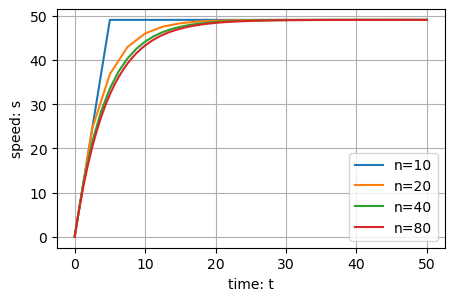
This approach works for any differential equation and is called Euler’s method
Euler’s method#
An approach that works for any differential equation involving just a single derivative:
General form:#
Examples#
General algorithm#
For differential equations in our general form, we have the following algorithm:
Set initial values for \(t^{(0)}\) and \(y^{(0)}\)
Loop over all time steps, until the final time, updaing using the formulae:
\[\begin{split} \begin{aligned} y^{(i+1)} & = y^{(i)} + \mathrm{d}t f(t^{(i)}, y^{(i)}) \\ t^{(i+1)} & = t^{(i)} + \mathrm{d}t. \end{aligned} \end{split}\]
Example#
Take three steps of Euler’s method to approximate the solution of
for \(1 \le t \le 2\).
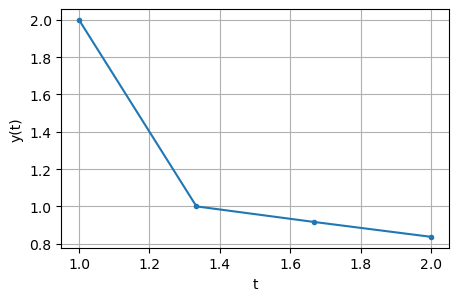
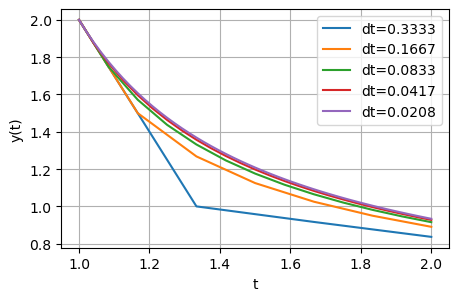
Summary#
Given the graph of \(y(t)\) it is possible to sketch the graph of \(y'(t)\) (with some care!).
Computational models which involve dynamic processes usually involve the use of derivatives.
An equation which includes a derivative is known as a differential equation.
To solve a differential equation it is necessary to know some information about the solution at some starting point (e.g. initial distance travelled, initial speed, population at a given point in time, etc.).
One computational approach to solve such equations is Euler’s method - which gets more accurate with more sub-intervals used.

